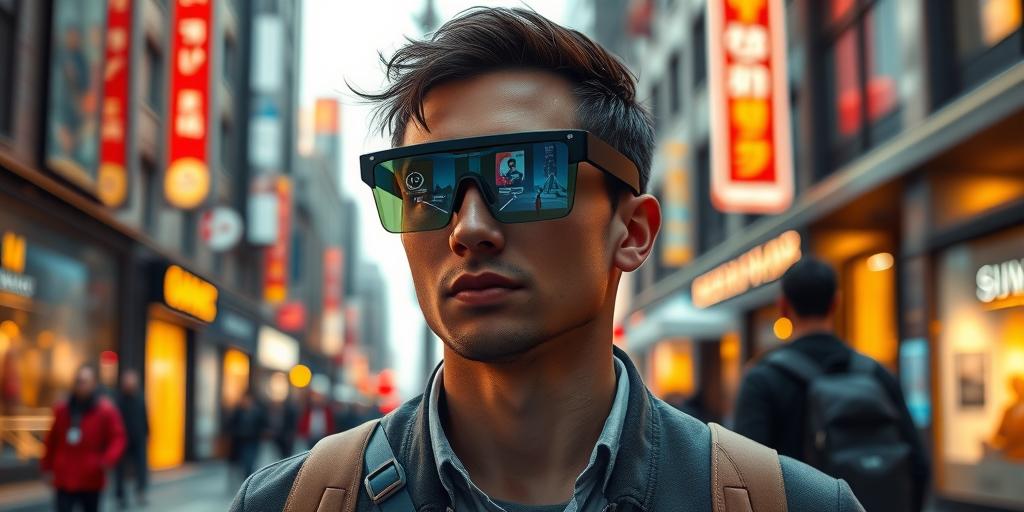Are smartphones on their way out? Could a new contender be rising to take its place? Prepare to be amazed as we delve into the exciting future of smart glasses and their potential to replace smartphones as we know them! This isn’t just science fiction; it’s a technological revolution that’s closer than you think. From augmented reality overlays to voice-activated commands, we explore how this incredible technology is shaping our lives and why it might just be the next big thing. Get ready to have your mind blown!
The Rise of Smart Glasses: A Technological Leap Forward
Smart glasses represent a significant leap in wearable technology, offering seamless integration of digital information into our physical world. Unlike smartphones that require constant attention and often distract from our immediate environment, smart glasses aim for a more subtle, hands-free experience. Imagine receiving notifications, checking messages, and even making calls without ever having to pull out your phone. This is the promise of smart glasses: a future where technology empowers you without encumbering you. This subtle integration offers a much more convenient and seamless user experience than using a smartphone constantly. Moreover, the ability to use voice commands and augmented reality features makes using smart glasses far less intrusive than your phone.
Augmented Reality and Beyond
The integration of augmented reality (AR) is a game changer. Imagine navigating a new city with real-time directions projected onto your lenses, identifying plants and animals instantly, or even translating languages in real-time. This is the power of AR, and smart glasses are at the forefront of bringing it to the masses. Smart glasses’ AR capabilities go beyond just navigation. Think about the possibilities for gamers, architects, mechanics, and even chefs who could have instant access to information, schematics, or recipes right in front of them. The technology empowers users across a range of industries.
Hands-Free Convenience and Seamless Integration
Smart glasses also excel in the realm of hands-free functionality. In our increasingly mobile world, the ability to access information and communicate without having to reach for our phones is invaluable. Whether you’re cycling, driving, or simply multitasking, smart glasses allow you to stay connected while keeping your hands free to perform other tasks. This hands-free capability is incredibly valuable in situations where using a smartphone is impossible or impractical, such as while driving or operating machinery.
Smart Glasses vs. Smartphones: A Head-to-Head Comparison
While smartphones remain incredibly powerful and versatile devices, smart glasses offer a unique set of advantages that could make them a compelling alternative for many users. Let’s break down a head-to-head comparison:
Portability and Convenience
Smart glasses are inherently more portable and convenient than smartphones. They’re lightweight, unobtrusive, and designed for all-day wear. They don’t require you to constantly pull out and put away a device. This makes them ideal for those who value a seamless and less intrusive technological experience.
Functionality and Limitations
While smart glasses offer many impressive features, it’s important to acknowledge their current limitations. They lack the powerful processing capabilities and extensive app ecosystems of smartphones, and their battery life is often shorter. However, technological advancements are rapidly addressing these limitations. Smart glasses have smaller screens than smartphones which makes multitasking more challenging. Their input methods are also not as fully developed, making some tasks more difficult to accomplish.
The Future of Smart Glasses: What to Expect
The future of smart glasses looks incredibly bright. As technology continues to advance, we can expect even more sophisticated features, improved battery life, sleeker designs, and a wider range of applications. The integration of artificial intelligence (AI) promises to personalize and enhance the user experience even further. We can also expect to see greater integration with other smart devices and platforms. The increased processing power will make smart glasses capable of far more complex tasks, making them much more versatile.
Technological Advancements and Challenges
Despite their potential, smart glasses face several significant challenges. These challenges include the need for miniaturization of key components, improvements in battery life, and the need to develop user interfaces that are intuitive and effective. Developers are working on overcoming these challenges. Overcoming these hurdles will unlock the full potential of this technology.
Market Adoption and Public Perception
The mass adoption of smart glasses will depend on their affordability and public acceptance. Initial high costs have limited adoption. However, as manufacturing scales and technology advances, prices are likely to decrease. The design and look of smart glasses will also be influential to the public reception of this technology. Smart glasses will need to be fashionable and unobtrusive to garner wider adoption.
Conclusion: Embracing the Smart Glasses Revolution
Smart glasses have the potential to revolutionize how we interact with technology. While they may not completely replace smartphones overnight, their advantages in portability, convenience, and hands-free functionality are undeniable. As technology continues to develop, smart glasses are set to become an indispensable tool for work and leisure alike. Are you ready to embrace the future? Join the smart glasses revolution and experience the seamless blend of digital information and physical reality!

